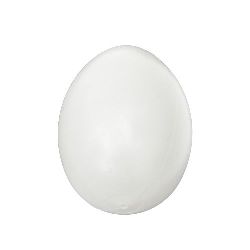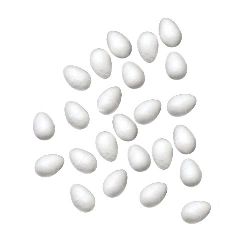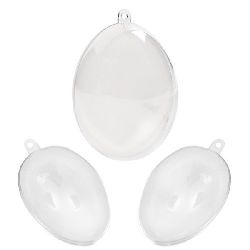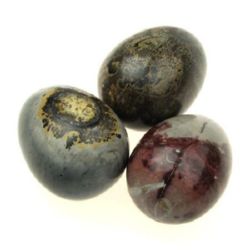Easter eggs for decoration
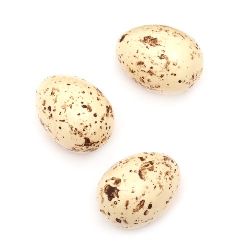
Egg plastic 38x28 mm with a hole 3 mm sprayed -10 pieces

Wooden figurine for decoration egg with flowers 80x60x3 mm №V07

Wooden figurine for decoration egg with ornaments 80x60x3 mm №V08
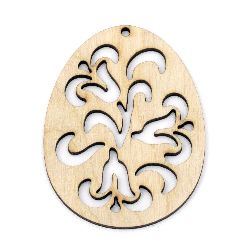
Wooden figurine for decoration egg with ornaments 80x60x3 mm

Wooden figurine for decoration egg with ornaments 80x60x3 mm

Styrofoam egg with textile 16 x 24 mm MIX
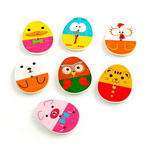
Bright Wooden Egg Button / Cute Animals Prints, 31x23x3 mm, Hole: 2 mm, MIX -10 pieces
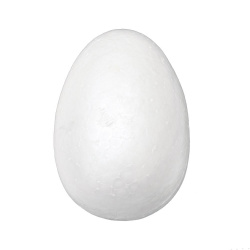
Polystyrene Eggs for Decoration, 87x60 mm - 2 Pieces

Polystyrene Eggs for Decoration, 75x57 mm - 5 Pieces

Polystyrene Eggs for Decoration, 68x42 mm - 5 Pieces
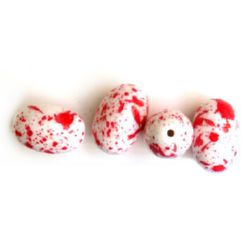
Plastic white egg beads painted with red dye 24x16 mm - 50 grams
Videos in the channel of EM ART
DIY Easter wreath
Bring the Easter mood into your home with us from EMART.
Watch the video and make an original wreath for the upcoming holiday.
DIY Original decoration for Easter
We continue with the Easter mood! In today’s video, we at EMART present you an original decoration for your home - a house made of wooden sticks.
Let’s create together!
Easter Eggs for Decoration
Traditions and Customs Related to the Easter Table
Celebrating Easter around the world includes various customs based on folklore, beliefs, and legends. Eggs, Easter bread, and lamb are three essential elements traditionally present on the Easter table. Every year, it is customary to dye eggs on Holy Thursday or Holy Saturday.
In the past, the egg was often associated with the Universe. As early as the 4th century, eating eggs during fasting periods was forbidden. However, spring was the season when hens laid the most eggs, so people began boiling them to preserve them longer.
The egg has long been considered a symbol of rebirth in spring, and with the advent of Christianity, it also became a symbol of human birth.
In the Orthodox Christian world, eggs are used as a special Easter greeting, while in Catholic traditions, painted eggs are hidden for children to find.
The number of eggs to be dyed is determined by the number of family members, or in villages, by the number of laying hens. Dyeing is done early in the morning on Holy Thursday by the eldest woman in the family or on Holy Saturday.
The first laid egg was believed to hold the most power, and the first red eggs were placed in a sieve lined with a new cloth so that the sun could see them and smile. These eggs were believed to have protective and healing powers.
Red eggs have their own symbolism – when a guest visits on Easter, it is said that an old custom requires gifting a red egg to ensure wealth never leaves the home.
The first egg was placed under the family icon in the bridal chest or buried in the middle of the field to protect it from hailstorms.
In the past, traditional ritual bread was baked for the Bulgarian Easter table. A French baker baked the first Easter bread in the 17th century, but it only became common in Bulgaria in the 1920s. Sweet Easter bread initially appeared in towns, replacing traditional breads like "kolak" or "kravai," as a result of urban influences and external culture.
Sweet Easter bread was even served in refined Sofia cafes, where one could order Viennese coffee with a slice of the bread. Today, Easter bread is believed to have originated in France, reaching Bulgaria in the early 20th century.
Like egg dyeing, it is prepared on Holy Thursday or Holy Saturday, but tradition dictates it should not be eaten before Easter itself.
It is said that flour should be sifted three times, and the dough should be kneaded several times to make the bread fluffy and stringy. The shape does not matter, but the most common form is a braid. It’s common to add nuts, raisins, chocolate, or candied fruits.
The Lamb is also an essential element of Easter rituals. Jesus Christ is represented as the Lamb of God, and the lamb symbolizes His sacrifice, as it was offered on Resurrection Day to cleanse the sins of the world.
In 1678, the Easter Bunny was first mentioned in a German story about a hare that hides eggs in the garden for children to find.
The presence of the bunny is not accidental – in ancient times, wild hares were considered symbols of the Moon, and as mentioned earlier, the first full moon after the spring equinox marks Resurrection Day. Unlike domesticated rabbits, wild hares are born with open eyes. Ancient people believed they never closed their eyes and were nocturnal creatures.
Today’s world is very different, yet Easter traditions from the past remain – dying eggs on Thursday or Saturday, having sweet bread and lamb on the table, attending church, wearing new clothes, and refraining from work during the Easter holidays.
In the past, no agricultural work was done throughout Holy Week, livestock was not harnessed, and horses were not ridden, especially on Good Friday – the strictest fasting day. Elders believed that working during this time would bring thunderstorms and hailstorms.
Our Products
We offer a wide range of over 50 types of Easter eggs and decorations.
Price Range
Discover EM ART’s decorative Easter eggs at low and affordable prices online. Prices vary depending on the type, size, and quantity.
Why Choose EM ART?
On our website, you will find over 60 types of Easter eggs to decorate your home for this special holiday.
In the same category “Occasions and Activities”, you will find various decorations for holidays such as Baba Marta, Valentine’s Day, International Women’s Day, Christmas, baptisms, weddings, and many other accessories and party decorations for birthdays and more.
We also offer decoration materials for embellishing your home, eggs, or Easter table.
Delivery
All received orders are processed and delivered within a few business days.
You can pay cash on delivery, with a money order, debit/credit card, or bank transfer.
We assure you that all personal data provided will be protected in accordance with the Personal Data Protection Act.


